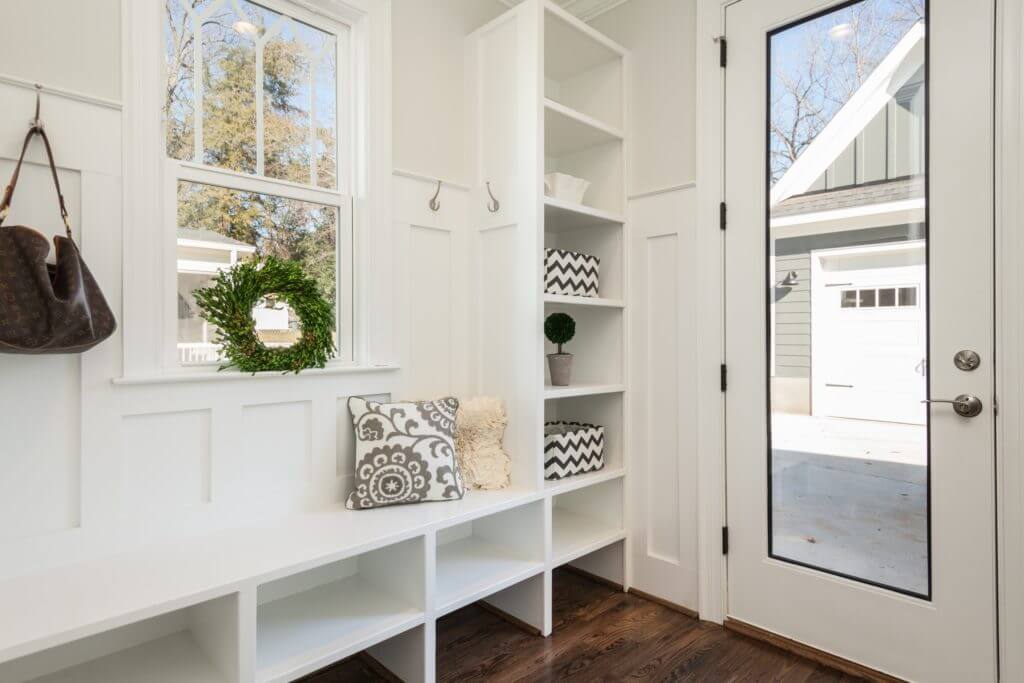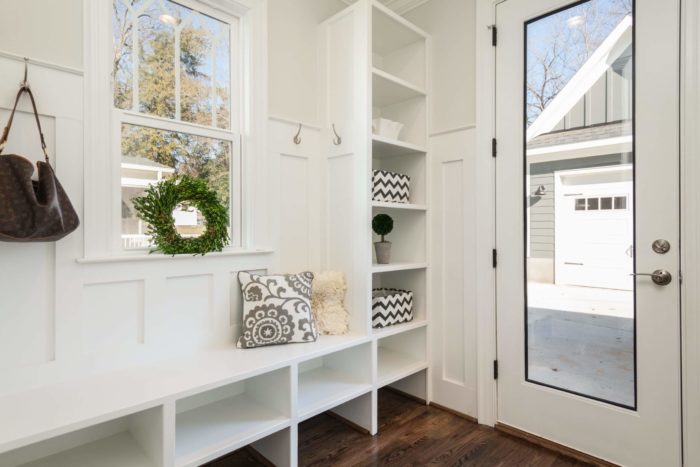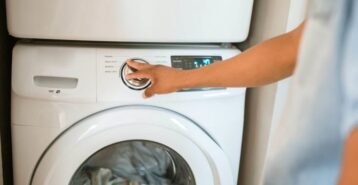Are you doing a home improvement project?
Modernize can pair you with three to four pros in your area, so you can compare options and save time and money.
Okay, so maybe you aren’t exactly herding cattle all day, but that doesn’t mean your shoes don’t get a little dusty. And if you can think of better things to do with your time than cleaning up a trail of muddy footprints, then read on for tips for designing a mudroom. These spaces are designed to take a beating and come out no worse for the wear.

What is a Mudroom?
A mudroom is a designated spot in your home (often inside a laundry room, right off the front door, or right off the garage-entry) where you and your visitors can drop coats, bags, and shoes. That way, you reduce dirty shoeprints, manage clutter, and have everything you need to leave the house again all contained in one spot. It should be the perfect marriage of aesthetic and functionality. This means thinking about storage, how the room flows, and even seating (you don’t want to have to be hopping around on one foot to take off those muddy rain boots). You should also choose durable, non-slip materials, particularly when it comes to flooring.
1. Mudroom Storage
Good storage is the soul of a helpful mud room. Most people opt for sturdy cubbies and cabinets, with nooks for boots and shoes at ground-level, and space for coats and backpacks at eye-level. Above that, we recommend putting in a little extra storage space for things that might not get used every day, but are still weekly-use items — whether that’s the dog’s frisbees, beach towels, or your child’s bike helmet. Some mudrooms even have small drawers to stash keys. dog leashes, and other smaller items.
Your storage design is going to vary depending on your individual needs, but regardless of how you arrange the cabinetry, use surfaces that will make it easy to clean up at the end of the day. Wood painted with a semi-gloss is great choice, as is melamine. Bright white cupboards will really a bright, open feeling, but if you’re not big on cleaning, choose a darker paint to conceal dust and dirt.
Find the Right Contractor for Your Project
Whether you’re ready to begin your project now or need some expert advice, our network of contractors are here to help. With a few simple questions, we’ll find the best local professionals for you
2. Mudroom Seating
Space in a mud room is often limited, but fortunately, seating there can play a double role: a place to attend to your laces, and a second storage area. When designing a mudroom, consider storage benches. They deftly hide nooks for boots or even pet beds. The space above the bench can also be a great spot to install hooks for purses and jackets. Storage benches can be purchased as stand-alone furniture pieces and are often available secondhand if you feel up for sprucing one up with fresh coat of paint. Storage benches are also a great DIY job if you are comfortable with woodworking. For something more custom, contact a local handyman or contractor.
3. Mudroom Flooring
Just like every surface in the mud room, flooring materials should be selected with special attention to their cleanability. But when choosing mudroom flooring, you also want to make sure you won’t be slipping around on the wet soles of your shoes. Absorbent, natural surfaces like slate or terracotta tiles are wonderful options if you’re looking to capture an antique look, but you can also go with a porcelain or cement tile for a more modern design—they’re both waterproof and fairly easy to clean.
4. Mudroom Walls
Your standard drywall can be pretty difficult to wipe down after a heavy mud spattering. Beadboard paneling or wainscoting is the wall material of choice for many designers when it comes to the mud room because it’s fairly easy to clean, and its textured surface makes nicks and scuffs less visible.
5. Designing a Mudroom for Pets
If you have animals at home, you can double-up your mudroom space as a pet playroom. Those built-in bottom nooks in cabinetry make a great place for pet beds. If your mudroom is in the laundry room, you can even add in a pet wash station or feeding station to your mudroom design.
Once you’ve considered the unique needs of your family, you’ll have a good idea of what kinds of storage and design elements should be included in your particular mudroom. Then, it’s just a matter of project execution. Whether you’re designing a mudroom by buying standalone pieces, shopping secondhand, or hiring a contractor to build something custom, you’ll wind up with an efficient and attractive space to corral all your family’s and visitor’s belongings.
Find the Right Contractor for Your Project
Whether you’re ready to begin your project now or need some expert advice, our network of contractors are here to help. With a few simple questions, we’ll find the best local professionals for you
Reviews from Real Homeowners
Welcome to Homeowner Resources! We are the Modernize blog. Modernize pairs more than 3 million homeowners a year with pre-vetted contractors in their area. This blog started because we believe homeowners should know everything about their homes, from how their HVAC works to which front door colors they might love. On Homeowner Resources, you can find information on every part of your home, right down to how you can negotiate with contractors to get the best price. Here's more about the blog.
Need a contractor? Learn more about how Modernize finds the right pro for you.



